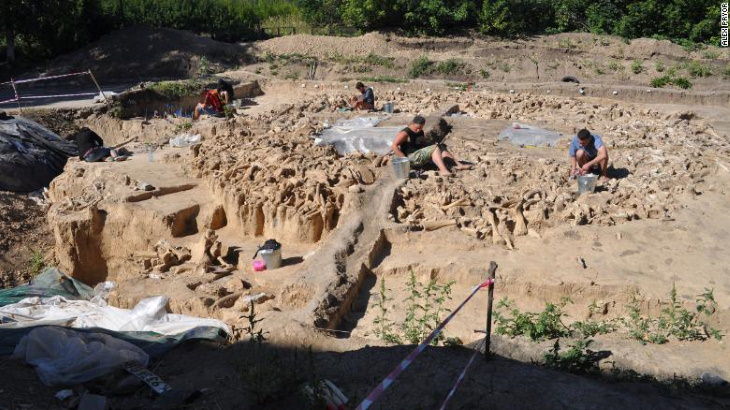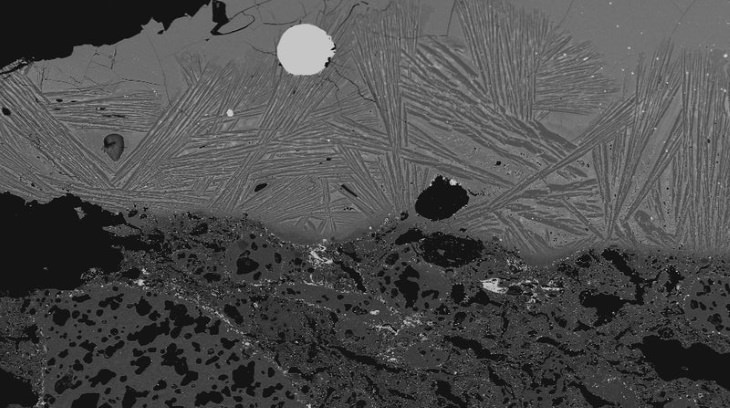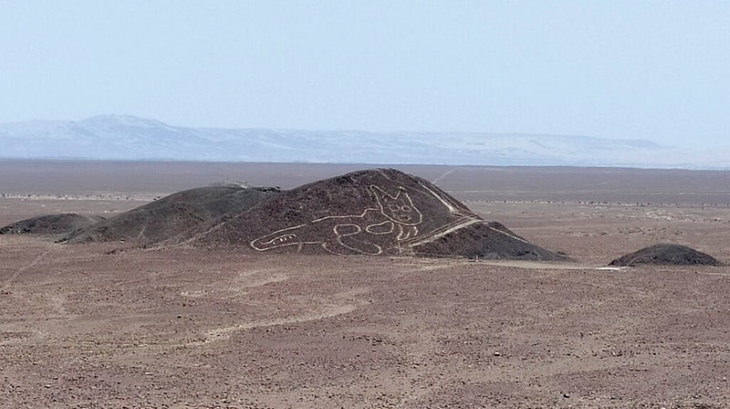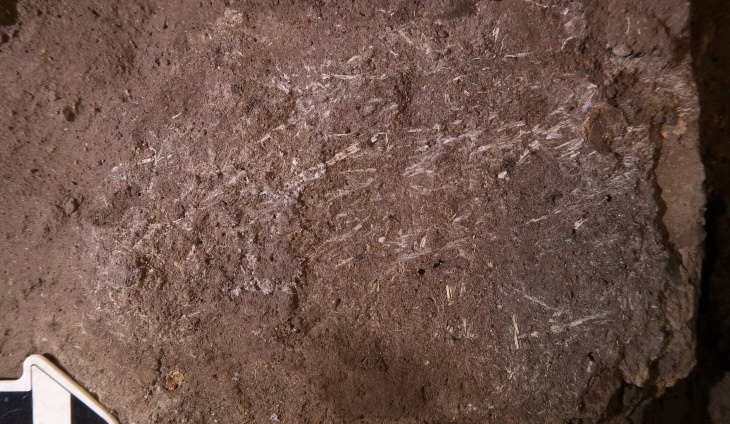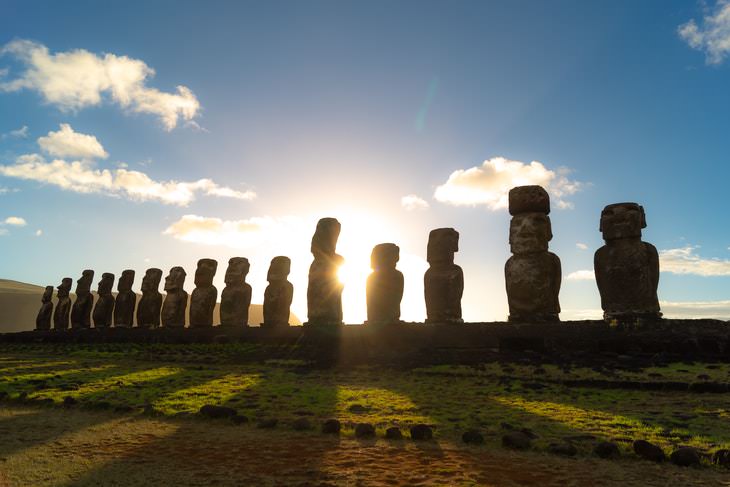1. Over 100 Ancient Egyptian tombs discovered at a burial site in Saqqara
This incredible discovery has already been dubbed ‘the greatest archeological find of 2020’ in the media, and it’s hardly an exaggeration. In June of 2020, the world was wowed by the then largest-known recent discovery of Ancient Egyptian coffins - 14 intact sarcophagi dating back 2,500 years were unearthed at the Saqqara Necropolis.
But this was only the beginning, as in November, Egypt’s Ministry of Tourism and Antiquities announced yet another, much bigger discovery - at least 100 ancient sarcophagi and 40 gilded statues of the deity Ptah Soker in the same location, along with many other findings. The Smithsonian Channel already teased their release of an upcoming documentary on this outstanding find, claiming that some of the artifacts date back 4,500 years, which is around the same time the Giza Pyramids were built.
2. A massive structure made of Mammoth bones found in Russia
25,000 years ago Paleolithic hunter-gatherers collected the bones of over 60 mammoths into a structure that measures 41 feet across at Kostenki in Russia. Why? Scientists just aren’t sure, but they have previously found similar collections of bones across Eastern Europe, though none as big as this one. Scientists previously believed that the mysterious circular structure could have served as a primitive house that would protect whoever was inside from the harsh weather during the Ice Age.
Researchers have even found signs that a fire was burned inside the structure. However, this large new mammoth dwelling challenges this idea. As Alexander Pryor, the lead researcher at the site pointed out to CNN, "It is difficult to imagine how an area this large could be roofed over using materials available in this environment." Thus, the nature of this Ice Age mammoth circle remains a mystery.
3. The precursor to stainless steel discovered in Iran
Most of us consider stainless steel a fairly recent invention, with modern technologies of making steel only emerging in the 20th century, but it turns out that alloys similar to stainless steel were actually created much earlier than previously thought. In fact, Ancient Persians forged chrome steel as far back as 1,000 years ago according to findings in Chahak, which used to be an important steel production center.
They used 1-2% chrome and 2% phosphorus to increase the strength and hardenability of the steel and likely forged armor, swords, daggers, and other items using the chromium steel. Though this prototypical stainless steel is not the same as modern chromium steel - it’s a lot more fragile because it contains phosphorus and a lot less chrome - it’s the first known instance of deliberate adding of chromium to strengthen steel.
4. A new Nazca drawing discovered by accident in Peru
The line drawings found in the Nazca desert are among the most mysterious and well-known ancient drawings ever. They are quite massive and are best observed from the air, making scientists wonder how people were able to see them back 2,000 years ago when they were created.
Joining the array of these ancient drawings is a new member - a 37-meter-long (121 ft) drawing of a feline discovered by complete accident by a Peruvian worker. This relaxing cat is believed to have been created not by the Nazca people, but their predecessors, the Paracas culture who inhabited the region between 500 BC and 200 AD.
5. There was a time when Britons worshipped hares and chickens
The first hares and chickens in Britain were not eaten, they were worshipped according to research done by the Universities of Oxford, Exeter, and Leicester. According to their findings, prior to the arrival of Romans in Britain, animals like chickens and brown hares were not seen as food. Instead, they were considered too precious and rare to eat, as shown by the careful burials scientists have unearthed across the British Isles.
“Historical accounts have suggested chickens and hares were too special to be eaten and were instead associated with deities – chickens with an iron age god akin to Roman Mercury, and hares with an unknown female hare goddess. The religious association of hares and chickens endured throughout the Roman period,” according to Professor Naomi Sykes from the University of Exeter. As the animals became more widespread, they started to be used in foods, however, especially after the Roman invasion of Britain.
6. A Viking king or queen’s burial unearthed in Norway
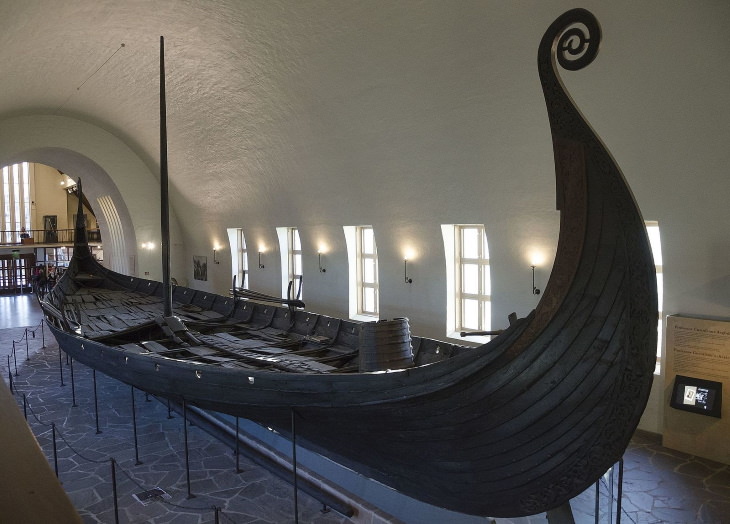
The Oseberg Ship (circa 820 AD) Image Source: Wikimedia Commons
Just last week, a prominent burial site was unearthed southeast of Oslo at Gjellestad. It’s a known fact that high-ranking Vikings were buried together with a ship and their belongings, so when the Norwegian research team found the remains of a massive 19 meter-long (62 ft) ship, they knew they were onto something amazing. As of now, it's difficult to tell who the person buried with this ship was, but according to excavation archaeologist Knut Paasche of the Norwegian Institute for Cultural Heritage Research, it may have been a king or queen, or maybe a noble warrior called a jarl. The finding most likely dates back between 750 and 850 AD.
This ship isn't the only noteworthy finding on the site either, as the location - the Jell Mound - is the second largest burial mound in the country, and remnants of buildings and other interesting things have also been located but not yet unearthed, so stay tuned.
Related Article: 15 of the Oldest Ships Ever Found
7. The Sistine Chapel of the Ancients
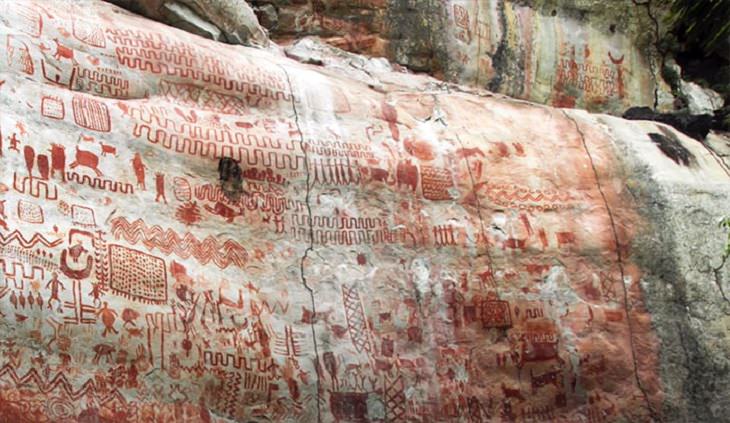
These paintings, which have been collectively christened "the Sistine Chapel of the Ancients", stretch across an 8-mile cliff in the middle of the Amazon Rainforest and were likely created 12,500 years ago. This seemingly simple collection of rock art depicts numerous different types of native animals, some that are present today and many that have gone extinct, as well as humans, plants, and human practices and traditions. The paintings were discovered by expert José Iriarte and his team from British Columbia, and they are located in a remote part of the Amazon Rainforest called Serranía La Lindosa. Click here to see more images of these beautiful paintings.
8. How humans slept 200,000 years ago
Is your mattress too hard, or maybe your pillow is too soft, making you toss and turn all night? After learning about the beds our distant ancestors slept in, you'll understand just how much our bedding has evolved and how precious your orthopedic mattress is. This finding is extremely important, as archeologists rarely get to discover the everyday aspects of prehistoric life.
What looks just like a dirty rock in the image above is actually the remains of a primitive bed found at a rock shelter in South Africa. These 227,000-year-old beds were made from piles of grass on top of some ash, which would provide some cushioning, warmth, and comfort and also keep bugs and insects away. When worn out, these beds would be burned to kill any pests and topped up with a fresh layer of grass.
9. Native Americans traveled to Polynesia long before Europeans
A fascinating study conducted in Polynesia established that a group of indigenous South Americans reached the islands of the South Pacific long before the first European colonizers did. At around 1,200 AD, about 300 years before the first Europeans set foot in Polynesia, South Americans traveled for thousands of miles and sailed to the Islands of South Pacific according to genetic tracing. These travelers blended into the local population and spread across the isles, including the famous Easter Island where the Rapanui statues stand.
10. The oldest Maya temple was hiding in plain sight
You'd think that the oldest Maya temple was hiding deep in an ancient forest, waiting to be discovered. Alas, the reality is somewhat more prosaic, and the Mayan ceremonial structure was right under our noses all along - on a Mexican cattle ranch near the border with Guatemala. Dating back to 1,000-800 BC and stretching to a mile in length and 50 feet in height, this ceremonial platform is both the largest and the oldest Maya temple.
The structure was given the name Aguada Fenix, or “Phoenix Reservoir”. University of Arizona archaeologist Takeshi Inomata and his team came across the temple after studying low-res lidar images provided by the Mexican government and were completely surprised to find it on a farm. "It just looks like part of the natural landscape,” stated Inomata to Archeology.org, so it was very difficult to spot. Excavations around the site are ongoing.
Share these amazing discoveries with those who like history!


